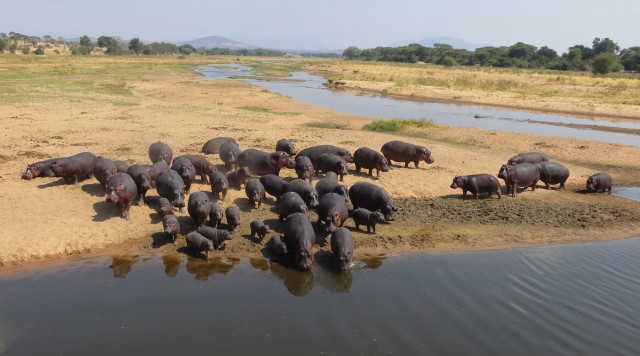Hungry, Hungry Hippos

The average hippo weighs more than 3,000 pounds and consumes about 100 pounds of vegetation daily. This naturally results in large quantities of dung being deposited into the rivers and lakes where hippos spend their days.
In general, the nutrients delivered via hippo dung to such aquatic ecosystems are perceived to be beneficial. For millennia, they provided a natural source of fertilizer that appears to fuel life in aquatic food webs. That may be changing.
In sub-Saharan Africa, deforestation, water-intensive agriculture and now climate change are significantly altering water cycles and causing many rivers to begin to dry. A new study by UC Santa Barbara community ecologist Keenan Stears, with colleagues at UC Berkeley and Sokoine University of Agriculture in Tanzania, examines how these forces of global change are redefining the way hippos — and their dung — shape the ecology of freshwater ecosystems. The findings appear in the Proceedings of the National Academy of Sciences.

“This work explores how hippo dung shapes freshwater chemistry and links these changes to associated patterns of aquatic biodiversity change,” said Stears, a postdoctoral researcher in UCSB’s Department of Ecology, Evolution, and Marine Biology (EEMB). “It also illustrates that the net impact of hippos on river ecosystems is dynamically controlled by river hydrology and reveals the capacity of human disturbances on river flow to drastically alter the role of ecosystem-linking species.”
Stears and his team studied river flow and hippo density in the Great Ruaha River in Tanzania’s Ruaha National Park, which protects an area about the size of Connecticut and is home to large populations of some of Africa’s most iconic species. The Great Ruaha River is the backbone of life in this dry region. Since 1993, however, the once constantly flowing river has ceased to flow during the dry season. The researchers tested nearly a dozen attributes of water quality and measured the diversity and abundance of aquatic life in hippo pools over multiple years, both when river flow was high and during dry periods when the river stopped flowing.